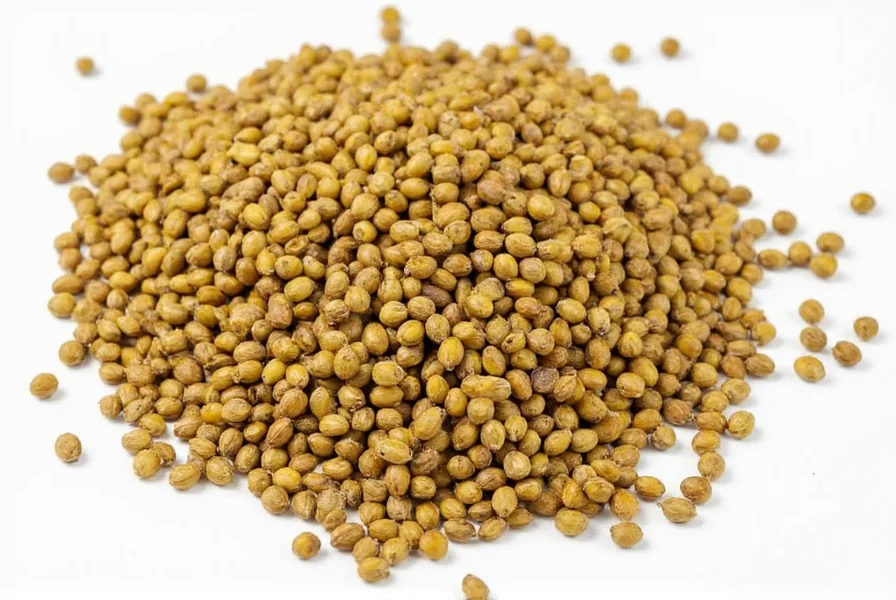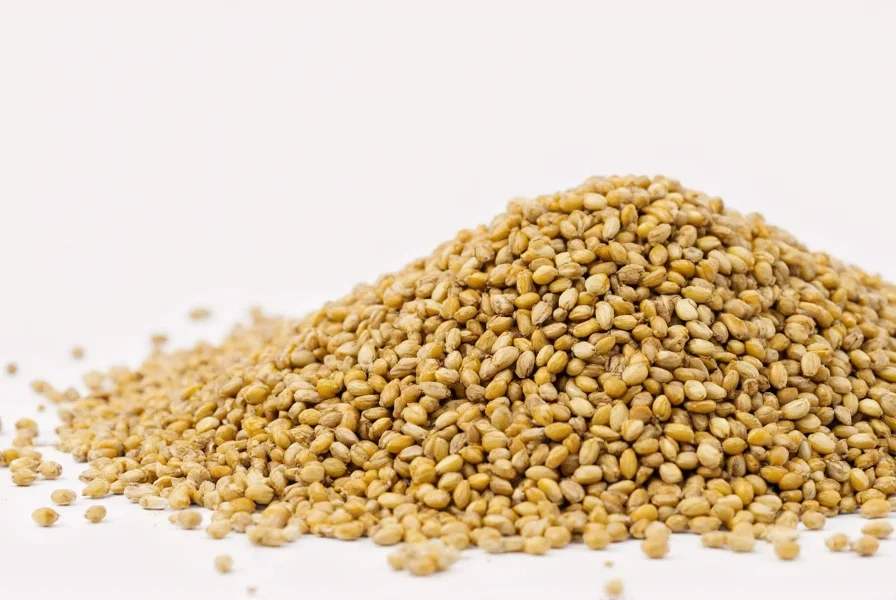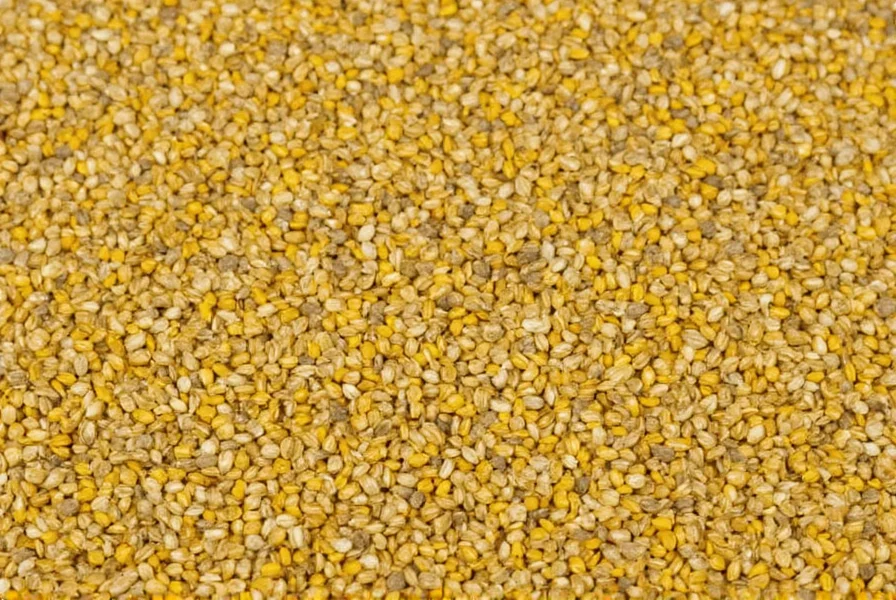When you ask what is a mustard seed, you're inquiring about one of nature's most fascinating botanical specimens that has played a significant role in human history. Mustard seeds come from plants in the genus Brassica or Sinapis, with the three primary types being black mustard (Brassica nigra), brown Indian mustard (Brassica juncea), and white/yellow mustard (Brassica hirta or Sinapis alba).
The physical characteristics of mustard seeds make them particularly noteworthy. Despite their minuscule size—comparable to the head of a pin or the tip of a pencil lead—these seeds pack remarkable flavor and nutritional value. A single mustard seed weighs approximately 1-3 milligrams, with roughly 10,000-20,000 seeds comprising just one ounce. Their small size has made them a powerful symbol in various cultural and religious contexts, most famously in the biblical parable where Jesus compares the kingdom of heaven to a mustard seed.
| Mustard Seed Type | Color | Size (Diameter) | Flavor Profile |
|---|---|---|---|
| Black Mustard | Dark brown to black | Approx. 2 mm | Strongest, pungent, spicy |
| Brown Indian Mustard | Brown | Approx. 1.5-2 mm | Hot, robust, complex |
| White/Yellow Mustard | Yellow to pale brown | Approx. 1-1.5 mm | Milder, tangy, slightly sweet |
Understanding what is the size of a mustard seed requires visual context. If you've ever wondered how small is a mustard seed compared to other seeds, consider that poppy seeds are slightly smaller (about 1 mm), while sesame seeds are noticeably larger (about 3-4 mm). Chia seeds, which measure approximately 2 mm, are comparable in size to the largest mustard seeds. This tiny dimension explains why the mustard seed became such an effective metaphor for something seemingly insignificant that can grow into something substantial.
The historical significance of mustard seeds extends far beyond their physical properties. Ancient civilizations including the Egyptians, Greeks, and Romans cultivated mustard plants primarily for their seeds. The Romans discovered that combining crushed mustard seeds with grape juice (called mustum) created a pungent condiment—hence the name "mustard." By the Middle Ages, mustard production had become a specialized craft in Europe, with Dijon, France eventually becoming famous for its distinctive mustard preparation.

From a botanical perspective, mustard seed botanical classification reveals why these tiny seeds have such powerful properties. Mustard seeds contain glucosinolates, which when crushed or chewed, interact with the enzyme myrosinase to produce allyl isothiocyanate—the compound responsible for mustard's characteristic pungency. This natural defense mechanism against herbivores ironically became the very quality humans learned to appreciate for culinary and medicinal applications.
When exploring why is the mustard seed famous beyond culinary contexts, we encounter its profound cultural and religious symbolism. The mustard seed parable appears in multiple religious texts, most notably in the Christian New Testament (Matthew 17:20, Luke 13:19), where it represents how faith, no matter how small, can produce significant results. This metaphor resonated across cultures because everyone could observe how such a tiny seed could grow into a substantial plant—sometimes reaching heights of 6-20 feet under optimal conditions.
The practical applications of mustard seeds extend to both kitchen and medicine cabinet. In culinary traditions worldwide, types of mustard plants that produce small seeds provide the foundation for countless condiments, spice blends, and pickling solutions. Indian cuisine uses brown mustard seeds in tempering (tadka), Chinese cooking incorporates them in spice pastes, and European traditions developed the familiar yellow mustard condiment. Medicinally, traditional systems have used mustard seeds for their warming properties, as a digestive aid, and in topical preparations for muscle pain.

For gardeners curious about growing these historically significant plants, mustard seeds germinate quickly—often within 3-10 days—and can reach maturity in 80-95 days depending on the variety. They thrive in temperate climates with well-drained soil and prefer full sun exposure. The plants produce distinctive yellow flowers before developing seed pods that contain the familiar tiny seeds. Harvesting occurs when the seed pods turn brown and begin to dry, at which point the seeds can be collected and stored for culinary use or replanting.
Modern scientific research continues to investigate the potential health benefits of mustard seeds, which contain selenium, magnesium, and omega-3 fatty acids. Studies suggest possible anti-inflammatory and antioxidant properties, though more research is needed to confirm these effects in humans. What remains undisputed is the remarkable journey of this tiny seed from ancient field to modern table—a journey that began with someone first asking what is a mustard seed and recognizing its extraordinary potential.
Frequently Asked Questions
How small is a mustard seed compared to other common seeds?
Mustard seeds typically measure 1-2 millimeters in diameter, making them slightly larger than poppy seeds (about 1 mm) but smaller than sesame seeds (3-4 mm). Approximately 10,000-20,000 mustard seeds equal one ounce in weight, highlighting their remarkably small size while explaining why they've become such a powerful symbol of potential growth from humble beginnings.
What gives mustard seeds their distinctive pungent flavor?
The pungent flavor of mustard seeds comes from glucosinolates, which interact with the enzyme myrosinase when the seeds are crushed or chewed. This chemical reaction produces allyl isothiocyanate, the compound responsible for mustard's characteristic heat. Different mustard seed varieties contain varying levels of these compounds, which explains why black mustard seeds are spicier than yellow varieties.
Why is the mustard seed used as a symbol in religious texts?
The mustard seed appears in religious symbolism, particularly in the Christian New Testament, because of its dramatic growth pattern. Though one of the smallest seeds sown by gardeners in ancient Palestine, it grows into a substantial shrub or small tree—sometimes reaching 6-20 feet tall. This remarkable transformation from something nearly invisible to something substantial made it an effective metaphor for how small beginnings can lead to significant outcomes.
What are the main types of mustard plants that produce edible seeds?
The three primary types of mustard plants producing edible seeds are: black mustard (Brassica nigra) with dark brown to black seeds, brown Indian mustard (Brassica juncea) with brown seeds, and white/yellow mustard (Brassica hirta or Sinapis alba) with yellow to pale brown seeds. Each variety offers different flavor profiles and heat levels, with black mustard being the most pungent and white mustard the mildest.
How long do mustard seeds remain viable for planting?
Properly stored mustard seeds maintain viability for 4-5 years. For optimal germination rates, store seeds in an airtight container in a cool, dark, dry place. Refrigeration can extend viability to 5-6 years. The seeds' natural oil content helps preserve them, but exposure to moisture, heat, or light will significantly reduce their ability to germinate over time.











 浙公网安备
33010002000092号
浙公网安备
33010002000092号 浙B2-20120091-4
浙B2-20120091-4